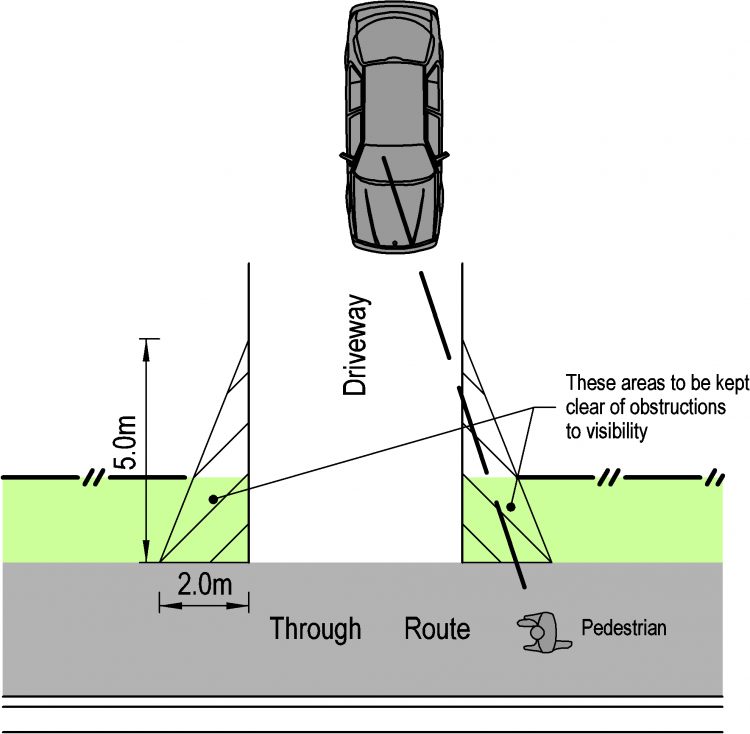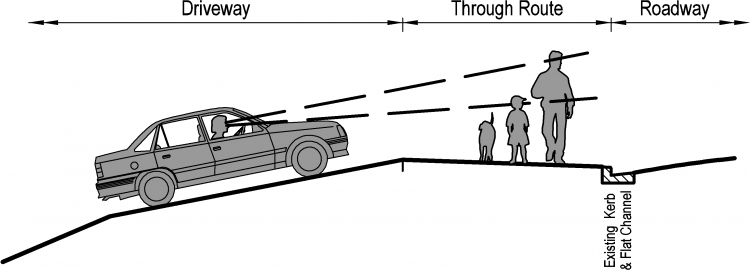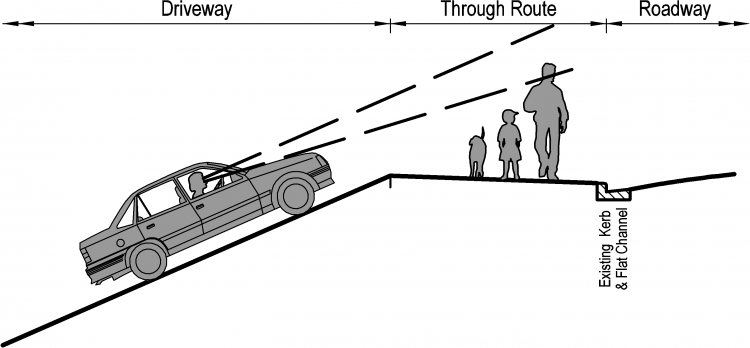Footpaths on either side of the driveway should be kept clear of all obstructions.[1] The Guidelines for visibility at driveways (RTS 6) recommends a five metre by two metre ‘visibility splay’ (see figure below) for areas with high pedestrian flows and more than 200 expected daily vehicle access manoeuvres . RTS 6 notes that the low / high volume cutoff point is arbitrary and ‘should be interpreted flexibly considering the type of activity being served by the driveway and the traffic flow on the frontage road.’

Driveway visibility splays; increase the splay if reversing vehicles are likely due to the site layout.
A preferable approach is to provide adequate visibility at all driveways, because the preponderance of local streets with frequent residential driveways presents a similar (combined) risk profile to a smaller number of higher volume driveways. In other words, 20 adjacent driveways with 10 turning movements per day is as risky for pedestrians as one driveway with 200 movements.
Boundary treatments next to driveways should not obscure pedestrians – avoid tall, close-boarded fencing, solid structures and dense vegetation. They should also not adversely affect any formal visibility splay. Low (<1.1m) fences or hedges will generally permit intervisibility with most child footpath users. If visibility splays cannot be provided in very constrained situations, install convex mirrors at the access way and/or visual and audio warnings to pedestrians.
Vertical visibility is also an issue for driveways that descend quickly from the footpath – ascending drivers may not be able to see pedestrians clearly on the footpath through zone, especially children. To prevent this a near level platform at the top of the driveway next to the footpath through zone can be provided (see figure bleow). At higher-volume access ways (200 vehicle access manoeuvres per day) where constrained circumstances do not allow such a platform, provide convex mirrors.

Vertical visibility where the approach is closer to level.

Steep driveway with a vertical visibility problem.
Driveways (especially residential driveways) should be carefully designed to minimise the risk to young children, especially those less than four years old. Where possible, physical barriers should be installed between homes and driveways, using features such as fences and self-closing gates. Any such barriers should be visually permeable within the visibility splay. Internal driveway layout should also encourage drivers to enter and exit the site in a forward direction if possible.
Signage for drivers should be provided at more heavily used driveways, such as those for servicing retail and industrial developments. This warns drivers of the presence of pedestrians and encourages a low vehicle speed.
Further information:
High-use driveway treatment for cycle paths and shared paths
[1] Land Transport Safety Authority. (1993). Guidelines for visibility at driveways RTS 6 [PDF, 640 KB]